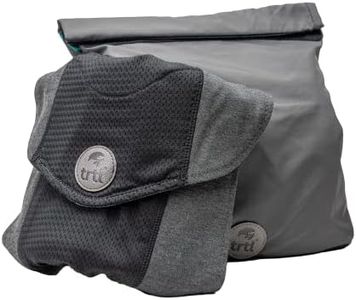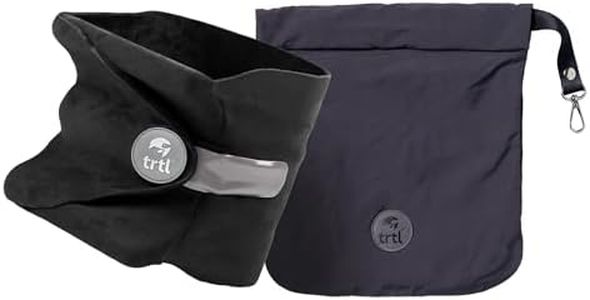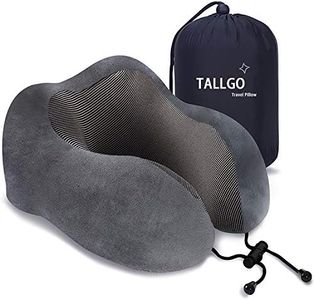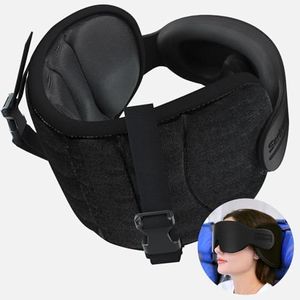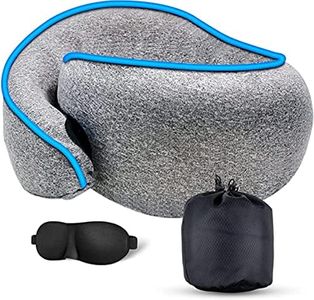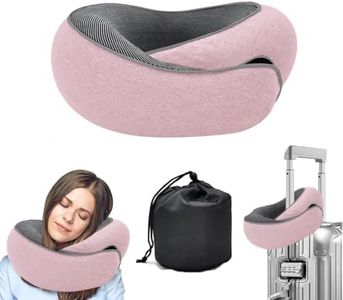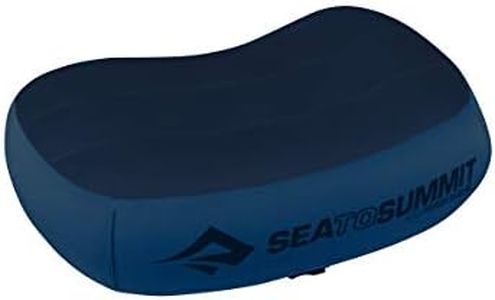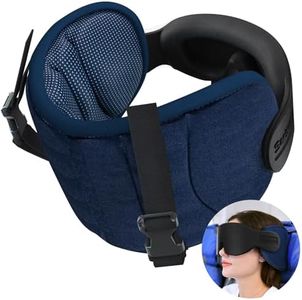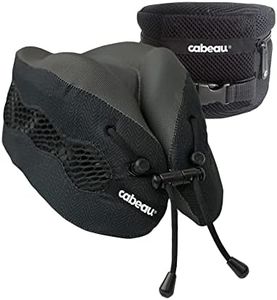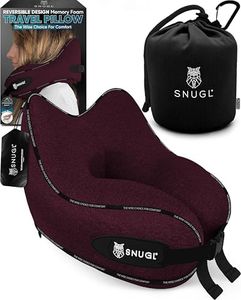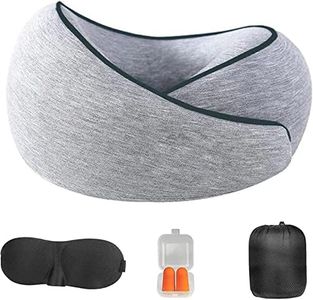We Use CookiesWe use cookies to enhance the security, performance,
functionality and for analytical and promotional activities. By continuing to browse this site you
are agreeing to our privacy policy
10 Best Travel Pillow For Airplanes
From leading brands and best sellers available on the web.Buying Guide for the Best Travel Pillow For Airplanes
Choosing the right travel pillow for airplanes can make a big difference in how comfortable and restful your journey feels. Since there are many shapes, materials, and features to consider, understanding what each option offers will help you find the best fit for your style of travel and sleep preferences. Reflecting on the way you usually rest while flying and any neck or back sensitivities can guide you toward a pillow that genuinely supports your needs.ShapeThe shape of a travel pillow determines how it supports your neck and head during flight. Popular shapes include U-shaped, wrap-around, rectangular, and more unconventional designs that support your head from the side or front. U-shaped pillows are classic and good for general support, whereas wrap-around or ergonomic designs can provide extra stability if your head tends to fall forward or sideways. People who sleep upright may prefer a pillow that supports under the chin or at the side. Think about how you usually sleep while flying — if you lean against the window, prefer forward-resting, or need all-around support — and choose the shape that matches your habits.
Filling MaterialThe filling material inside a travel pillow determines its softness, firmness, and how it recovers shape. Common fillings include memory foam, microbeads, inflatable air chambers, and fiberfill. Memory foam offers good support and molds to your shape, but can feel warm and less compressible. Microbeads tend to be squishy and can adapt to your movement, but sometimes lose shape over time. Inflatable pillows are compact and adjustable in firmness but might not feel as plush or supportive for long periods. Choose a material that suits your preference for softness and support, and consider whether you want your pillow to be easily packable or especially plush.
Cover FabricThe material that covers your travel pillow affects its comfort, breathability, and cleanliness. Common cover fabrics include velour, cotton, polyester, and mesh. Velour and fleece are soft and cozy but can get warm, while cotton is breathable and often cooler against the skin. Some covers feature moisture-wicking or antimicrobial properties which are helpful for long trips. If you have sensitive skin or travel in hot or cold climates, choose a cover that will feel comfortable throughout your trip and is preferably removable and washable for hygiene.
PortabilityPortability refers to how easy it is to carry and pack your travel pillow. Some pillows are bulky, while others compress into a small pouch or deflate when not in use. Inflatable pillows are typically the lightest and most compact, while memory foam options can often be rolled or compressed with a strap or pouch. Think about how much space you have in your carry-on and how often you'll use or pack the pillow. If you value easy packing, prioritize compressible or inflatable options.
Neck and Chin SupportSupport around the neck and chin helps prevent your head from nodding forward or to the side, reducing neck strain during long flights. Some pillows have built-in bolster sections, raised sides, or unique structures to hold your head in place. If you often wake up with a sore neck or tend to fall forward when napping, look for designs that specifically mention enhanced chin or side support. Assess your typical sleeping posture in an airplane seat and match the support to your habits.
AdjustabilityAdjustability is the pillow’s ability to be tailored to your specific comfort needs. Features like adjustable straps, removable inserts, or inflatable chambers allow users to change the firmness, height, or fit around the neck. This helps accommodate different seating positions or personal preferences. If you are particular about how much support you need, or if your travel style varies (for example, switching between window and aisle seats), consider pillows with adjustment options.

